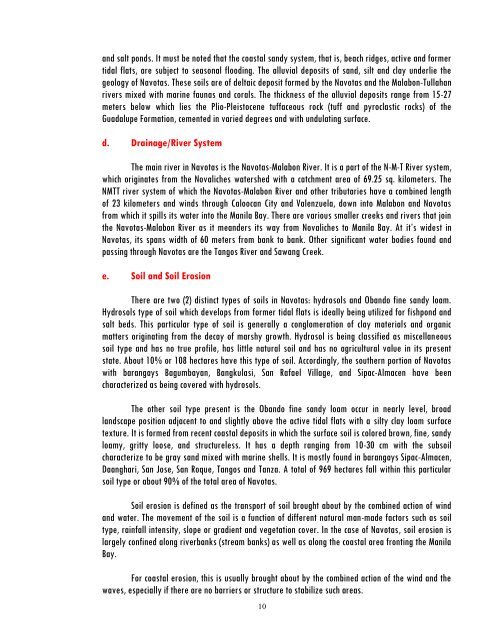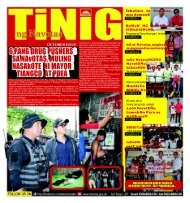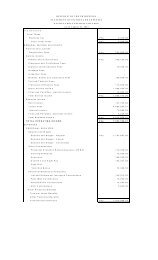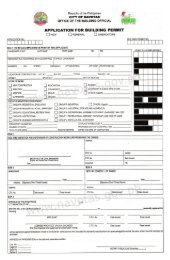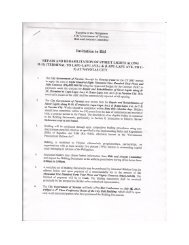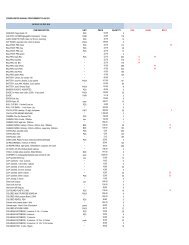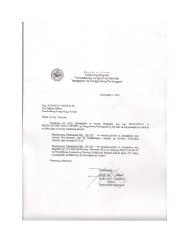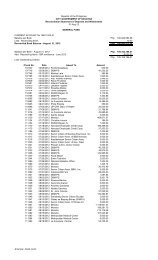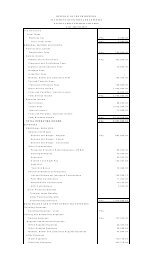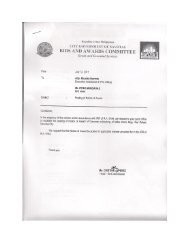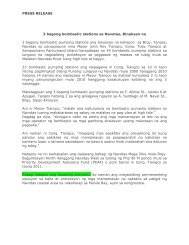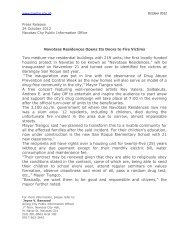Socio Economic Profile 2010 - Navotas City
Socio Economic Profile 2010 - Navotas City
Socio Economic Profile 2010 - Navotas City
You also want an ePaper? Increase the reach of your titles
YUMPU automatically turns print PDFs into web optimized ePapers that Google loves.
and salt ponds. It must be noted that the coastal sandy system, that is, beach ridges, active and former<br />
tidal flats, are subject to seasonal flooding. The alluvial deposits of sand, silt and clay underlie the<br />
geology of <strong>Navotas</strong>. These soils are of deltaic deposit formed by the <strong>Navotas</strong> and the Malabon-Tullahan<br />
rivers mixed with marine faunas and corals. The thickness of the alluvial deposits range from 15-27<br />
meters below which lies the Plio-Pleistocene tuffaceous rock (tuff and pyroclastic rocks) of the<br />
Guadalupe Formation, cemented in varied degrees and with undulating surface.<br />
d. Drainage/River System<br />
The main river in <strong>Navotas</strong> is the <strong>Navotas</strong>-Malabon River. It is a part of the N-M-T River system,<br />
which originates from the Novaliches watershed with a catchment area of 69.25 sq. kilometers. The<br />
NMTT river system of which the <strong>Navotas</strong>-Malabon River and other tributaries have a combined length<br />
of 23 kilometers and winds through Caloocan <strong>City</strong> and Valenzuela, down into Malabon and <strong>Navotas</strong><br />
from which it spills its water into the Manila Bay. There are various smaller creeks and rivers that join<br />
the <strong>Navotas</strong>-Malabon River as it meanders its way from Novaliches to Manila Bay. At it’s widest in<br />
<strong>Navotas</strong>, its spans width of 60 meters from bank to bank. Other significant water bodies found and<br />
passing through <strong>Navotas</strong> are the Tangos River and Sawang Creek.<br />
e. Soil and Soil Erosion<br />
There are two (2) distinct types of soils in <strong>Navotas</strong>: hydrosols and Obando fine sandy loam.<br />
Hydrosols type of soil which develops from former tidal flats is ideally being utilized for fishpond and<br />
salt beds. This particular type of soil is generally a conglomeration of clay materials and organic<br />
matters originating from the decay of marshy growth. Hydrosol is being classified as miscellaneous<br />
soil type and has no true profile, has little natural soil and has no agricultural value in its present<br />
state. About 10% or 108 hectares have this type of soil. Accordingly, the southern portion of <strong>Navotas</strong><br />
with barangays Bagumbayan, Bangkulasi, San Rafael Village, and Sipac-Almacen have been<br />
characterized as being covered with hydrosols.<br />
The other soil type present is the Obando fine sandy loam occur in nearly level, broad<br />
landscape position adjacent to and slightly above the active tidal flats with a silty clay loam surface<br />
texture. It is formed from recent coastal deposits in which the surface soil is colored brown, fine, sandy<br />
loamy, gritty loose, and structureless. It has a depth ranging from 10-30 cm with the subsoil<br />
characterize to be gray sand mixed with marine shells. It is mostly found in barangays Sipac-Almacen,<br />
Daanghari, San Jose, San Roque, Tangos and Tanza. A total of 969 hectares fall within this particular<br />
soil type or about 90% of the total area of <strong>Navotas</strong>.<br />
Soil erosion is defined as the transport of soil brought about by the combined action of wind<br />
and water. The movement of the soil is a function of different natural man-made factors such as soil<br />
type, rainfall intensity, slope or gradient and vegetation cover. In the case of <strong>Navotas</strong>, soil erosion is<br />
largely confined along riverbanks (stream banks) as well as along the coastal area fronting the Manila<br />
Bay.<br />
For coastal erosion, this is usually brought about by the combined action of the wind and the<br />
waves, especially if there are no barriers or structure to stabilize such areas.<br />
10


